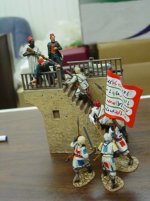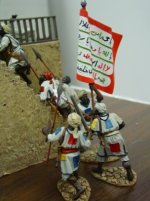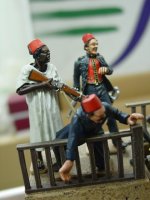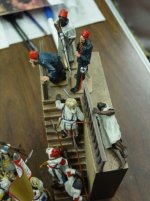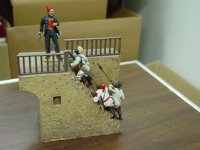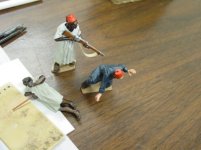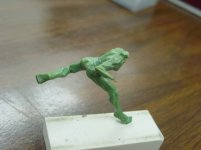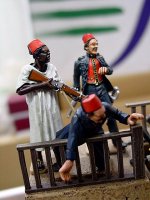A great set for John to add to the Siege of Khartoum would be the Canadian Voyageurs and Mohawk Indians who were chosen by Wolseley to participate in the Nile Relief Expedition to rescue Gordon. This would tie together John's French & Indian War and Sudan series quite nicely.
Carl Benn’s new book, Mohawks on the Nile, just released by Dundurn Press in Toronto, explores the fascinating story of sixty aboriginal men who left their occupations in the Ottawa River timber industry to participate in a military expedition on the Nile River in 1884–85. Chosen because of their outstanding skills as river pilots, they formed part of the Canadian Voyageur Contingent, which transported British troops through the Nile’s treacherous cataracts on a fleet of whaleboats in the hard campaigning of the Sudan War. Their objective was to reach Khartoum in what then was the Egyptian province of Sudan. Their mission was to save its governor-general, Major-General Charles Gordon, besieged by Muslim forces inspired by the call to liberate Sudan from foreign control by Muhammad Ahmad ibn ‘Abdullahi, known to his followers as the ‘the Mahdi.’
Beyond Carl Benn’s narrative of the campaign of 1884–85 and analysis of its larger meaning in First Nations history, the book presents the memoirs of two Mohawk veterans of the Sudan War, Louis Jackson and James Deer, which they wrote upon returning to Canada in 1885. It also includes other revealing period images and documents, along with an annotated roll of the Mohawks voyageurs and other appendices. One of those appendices is a particularly-accurate distance chart of the Nile River in the 1880s, produced with the best satellite and other data available by Ryerson’s buttociate Dean of Arts, Dr Philip Coppack. As well, Ryerson’s Paul Du from the Centre for the Study of Commercial Activity drew maps for Mohawks on the Nile, the cost of which was supported through the generosity of the university.


